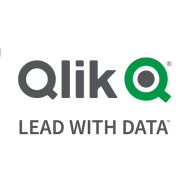

Qlik Compose and WSO2 Enterprise Integrator are competing products in the data integration and transformation category. Qlik Compose has the upper hand in cost-effectiveness, while WSO2 Enterprise Integrator is preferred for its comprehensive feature set.
Features: Qlik Compose automates ETL processes, simplifies data preparation, and rapidly delivers insights. It excels in ETL efficiency, with features like data warehouse automation and easy data modeling. WSO2 Enterprise Integrator supports various integration patterns, enhances cloud compatibility, and processes real-time data efficiently. Its strength lies in broad integration capabilities, suited for complex environments.
Room for Improvement: Qlik Compose could enhance its integration features, expand its support for more data formats, and improve its graphical interface for better user experience. WSO2 Enterprise Integrator may need improvements in reducing setup complexity, enhancing its documentation for better accessibility, and optimizing its resource usage for efficiency.
Ease of Deployment and Customer Service: Qlik Compose supports quick deployment with simple configuration and responsive customer support, minimizing disruptions. WSO2 Enterprise Integrator offers a flexible deployment model, with thorough documentation and strong community support, but it requires more initial setup effort.
Pricing and ROI: Qlik Compose offers competitive pricing, focusing on automation features that provide significant ROI for businesses seeking cost efficiency. WSO2 Enterprise Integrator's higher initial costs are counterbalanced by its comprehensive feature set, which brings long-term benefits. Qlik’s approach targets cost efficiency, while WSO2 emphasizes value propositions for in-depth integrations.
| Product | Market Share (%) |
|---|---|
| WSO2 Enterprise Integrator | 0.8% |
| Qlik Compose | 1.0% |
| Other | 98.2% |


| Company Size | Count |
|---|---|
| Small Business | 3 |
| Midsize Enterprise | 3 |
| Large Enterprise | 6 |
| Company Size | Count |
|---|---|
| Small Business | 8 |
| Midsize Enterprise | 2 |
| Large Enterprise | 11 |
Qlik Sense is a powerful business intelligence tool that offers a range of features to help organizations make faster and more informed decisions. Its primary use cases include operational and financial dashboards, self-service reporting, and centralized access to cross-functional reports. The solution is praised for its mobile platform, ease of use, data-sharing capabilities, and extensibility.
Qlik Sense has helped organizations improve data literacy, reduce time consumed in complex reports, and provide widely available MI to senior stakeholders. It also enables self-service analytics, improves data quality and governance, enhances collaboration, and reduces costs.
WSO2 Enterprise Integrator, core to the WSO2 Integration Agile Platform, is an open source Integration product for cloud native and container-native projects. It enables enterprise integration experts to build, scale, and secure sophisticated integration solutions to achieve digital agility. Unlike other integration products, WSO2 Enterprise Integrator already contains integration runtimes, message brokering, business process modeling, analytics and visual tooling capabilities.
We monitor all Data Integration reviews to prevent fraudulent reviews and keep review quality high. We do not post reviews by company employees or direct competitors. We validate each review for authenticity via cross-reference with LinkedIn, and personal follow-up with the reviewer when necessary.